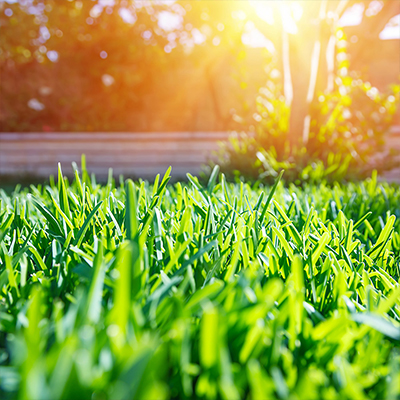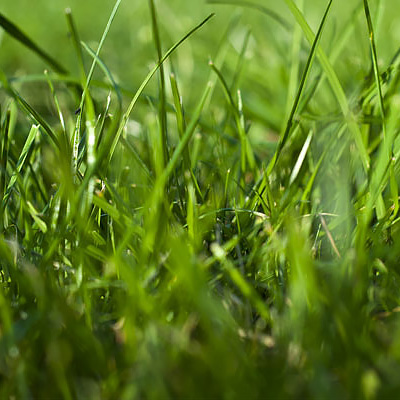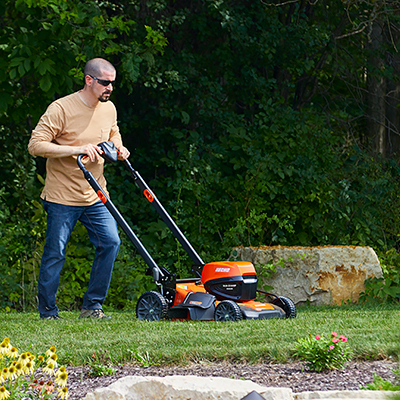Fall Lawn Care Tips

Last updated September 7, 2023
A beautiful spring lawn begins with fall lawn care. Take the time this season for important lawn maintenance projects such as fertilizing, patching and overseeding. Along with mowing your grass just before the first frost, these maintenance projects protect your yard before the onset of winter. They also prep your yard for a green and healthy lawn in the spring. This guide outlines how to complete fall lawn care tasks.
Table of Contents
Why Fall?
Choosing the Right Grass Type for Your Lawn
How to Fertilize Your Lawn
Use the Right Lawn Care Equipment
Maintain Your Fall Lawn
Why Fall?

Fall is the ideal time to improve the health of your lawn. Grass recovering from a long, hot summer needs fertilizer to replenish nutrients and enrich the soil. Raking and patching support disease and drought resistance. Mowing directs growth to the roots, which protects grass during the cold winter months. Seeding in the fall takes advantage of cooler, wetter weather; seeds rarely survive when planted in the heat of summer.
Fall lawn care eliminates the need to do deep prep work in the spring. This means that you’ll have more time to focus on the accent areas in your yard such as flower beds and garden spots.
Choosing the Right Grass Type for Your Lawn

Your yard will only be as good as the grass you plant. It’s important to know your climate zone so that you can choose the right grass.
Temperature, rain fall, sun exposure and humidity impact how grass will grow in your area.
Once you have identified your climate zone, you’ll need to compare different types of grasses to determine the one best for your lawn. Grasses that thrive in Florida won’t last one season in Minnesota. To avoid making a costly mistake, choose the right grass for your climate zone.
Warm season grass originates from the South and grows best in hot weather. It grows dormant in the winter. Types of warm season grass include:
- Bahia grass, which thrives in full sun to partial shade. It has a coarse texture and requires low water needs. This is an aggressive warm-season grass.
- Bermuda grass enjoys full sun exposure. Bermuda grass has a fine-to-medium texture and requires moderate watering. It also grows aggressively, which helps it resist weeds.
- Buffalo grass, a low-maintenance, warm-season grass. This tough turf has a fine texture, low watering needs and likes full sun exposure.
- Centipede grass, a low-maintenance, warm-season grass. Centipede grass has a coarse texture and needs moderate watering. It likes full sun to partial shade and grows slowly, hence its name.
- St. Augustine grass, a quick-growing warm-season grass. Because it tolerates heat and humidity, it also needs medium-to-high watering frequency. This is a coarse grass that requires full sun to partial shade.
- Zoysia grass, a dense, warm-season grass. It has a fine-to-medium texture and requires moderate watering. It also needs full sun to partial shade. Zoysia can withstand heavy foot traffic.
- Creeping bentgrass, a cool-season grass that is soft and dense. Because of its fine texture, creeping bentgrass produces a carpet-like lawn. It is a high-maintenance grass that requires frequent watering and full sun to partial shade.
- Fescue grass, a cool-season grass that thrives in mild winters and warm summers. There are a variety of textures to choose from. Fescue requires minimal watering and full sun to partial shade.
- Kentucky Bluegrass, which produces a lush, dense and durable lawn. It has a fine-to-medium texture, withstands cold and is resistant to disease. Kentucky Bluegrass needs moderate to frequent watering and full sun to partial shade. It also self-spreads.
- Perennial ryegrass, a medium-to-coarsely textured grass that can’t tolerate extreme heat and cold. It is a cool-season grass that requires frequent watering and full sun to partial shade.
How to Fertilize Your Lawn
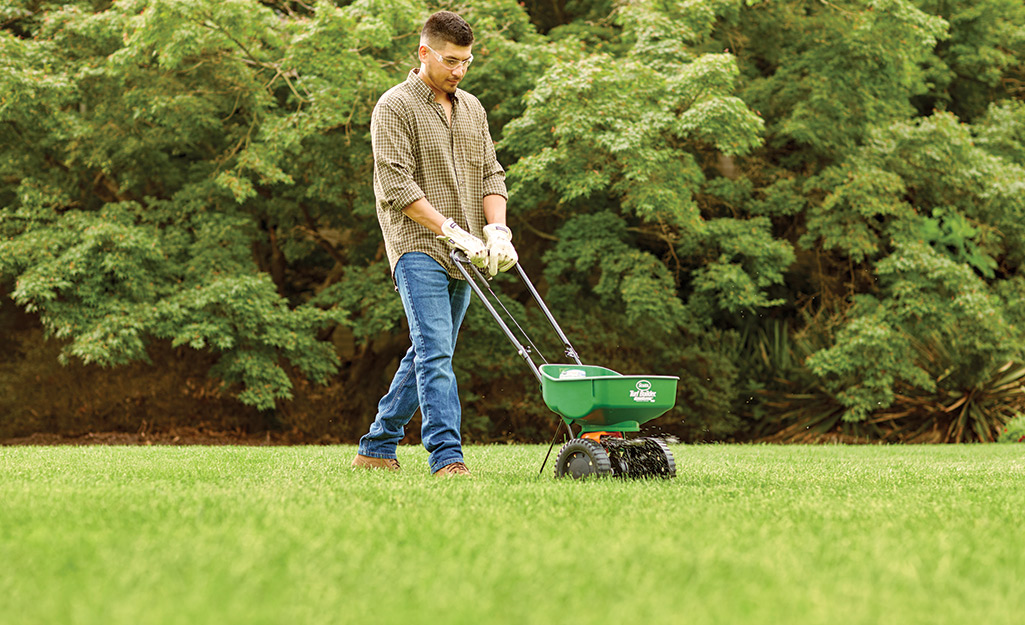
Healthy lawns need help replenishing nutrients needed for their growth and lush appearance. To achieve that next level look, fertilize your lawn twice in the fall. Fertilizer comes in a pellet or liquid form.
Apply fertilizer early in the season. Six-to-eight weeks later, fertilize again, but this time with a weed and feed product.
Fertilizer contains three essential nutrients for a healthy lawn:
(N) - Nitrogen for color and growth
(P) - Phosphorous for healthy roots
(K) - Potassium for all-around health
The amount of each additive differs based on the health of your soil. Your local Cooperative Extension Service can conduct a soil test so that you know what you need to add for a healthy lawn.
Finally, when fertilizing or applying any type of product to your lawn, be sure to read the directions and information provided on the bag. Twice as much is not twice as effective.
Use the Right Lawn Care Equipment
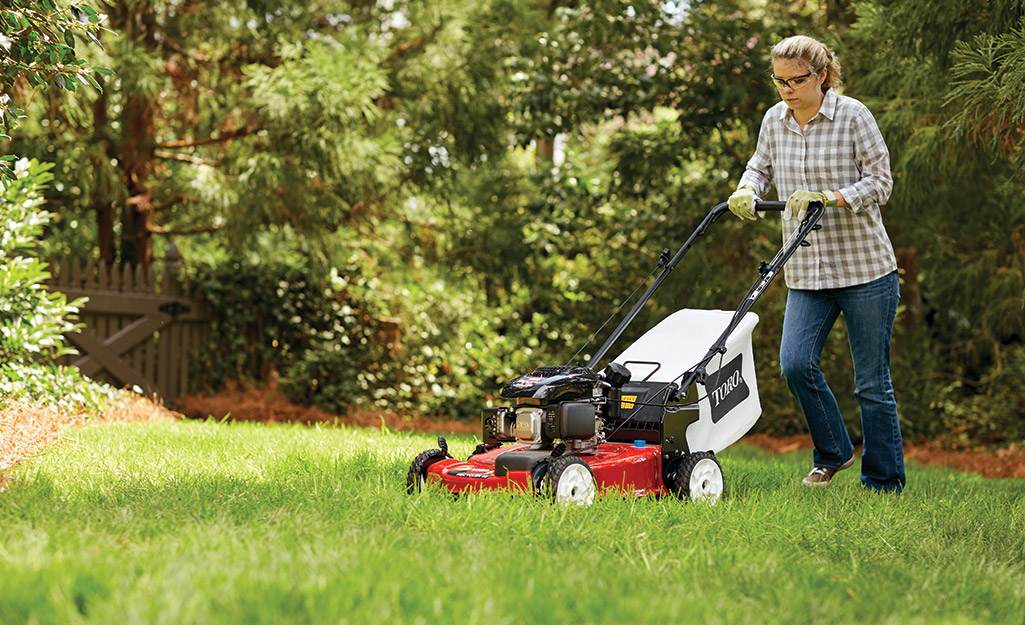
The right equipment always makes a job easier. This is especially true for fall lawn care. The following tools will make the job quicker and easier:
- Lawn mower – Mowing the lawn forces growth to the roots instead of to the grass blades. This is useful during the fall when grass is no longer dormant from the summer heat. Look for a mower that also mulches as you go. For best results, check to make sure you have a sharp mower blade.
- Lawn Spreader – A lawn spreader evenly distributes fertilizer or grass seed over your lawn, preventing too much from being applied in one area and not enough in others. There are a variety of spreaders to choose from based on your application preferences.
- Aerator – An aerator punches holes in your lawn to allow oxygen and nutrients to penetrate the soil. It also provides a place for seeds to settle and germinate.
- Leaf blower – A leaf blower makes it easy to collect leaves in one place for easy cleanup.
- Sprinkler – A sprinkler will help you keep your lawn hydrated, especially if you have applied fertilizer or distributed grass seed.
Maintain Your Fall Lawn
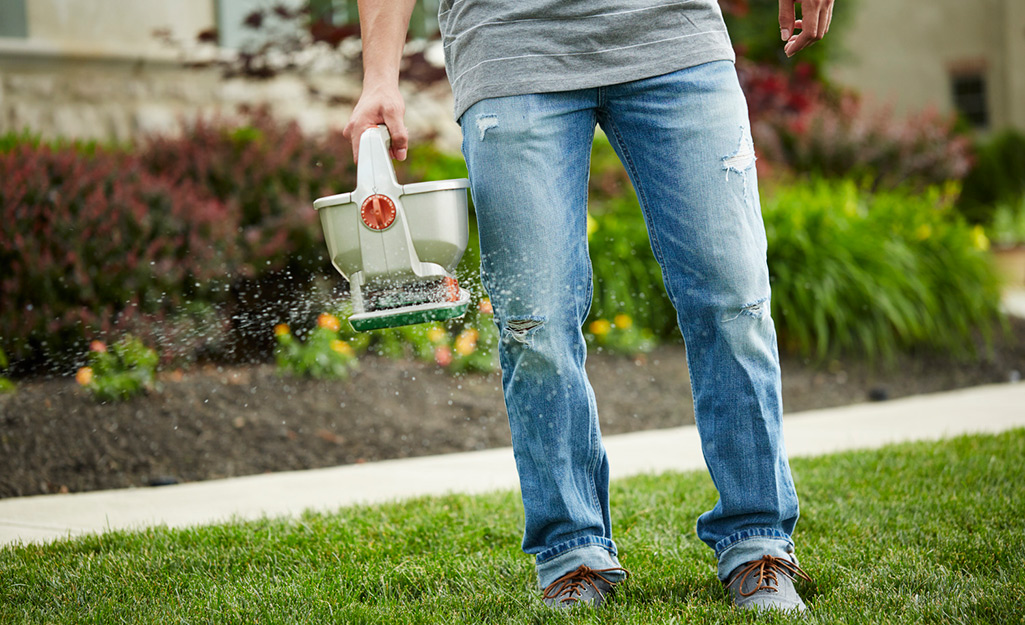
Besides mowing and fertilizing, there are a few other ways to maintain your fall lawn:
- In late fall, drop the mower blade level and cut the grass 1 to 2 inches shorter until it hibernates for the winter.
- Overseed your lawn. When you add additional seed to an already established lawn, it helps lawns damaged by heavy foot traffic, heat and lack of water.
- Patch your lawn to fill in bald spots caused by standing water, foot traffic and lack of water.
- Remember to apply two applications of fertilizer for the best results in spring: once early in the season and then six to eight weeks later.
- Water your yard based on weather conditions and the instructions provided for the type of grass in your lawn.
A healthy lawn takes pre-planning and work, but it’s worth it when the outcome is a lush, healthy yard that’s the envy of the neighborhood. Follow these tips to get you started and shop online using The Home Depot Mobile app for lawn tools and supplies. If you decide you need more help, visit The Home Depot Garden Center and get answers from a knowledgeable associate.










